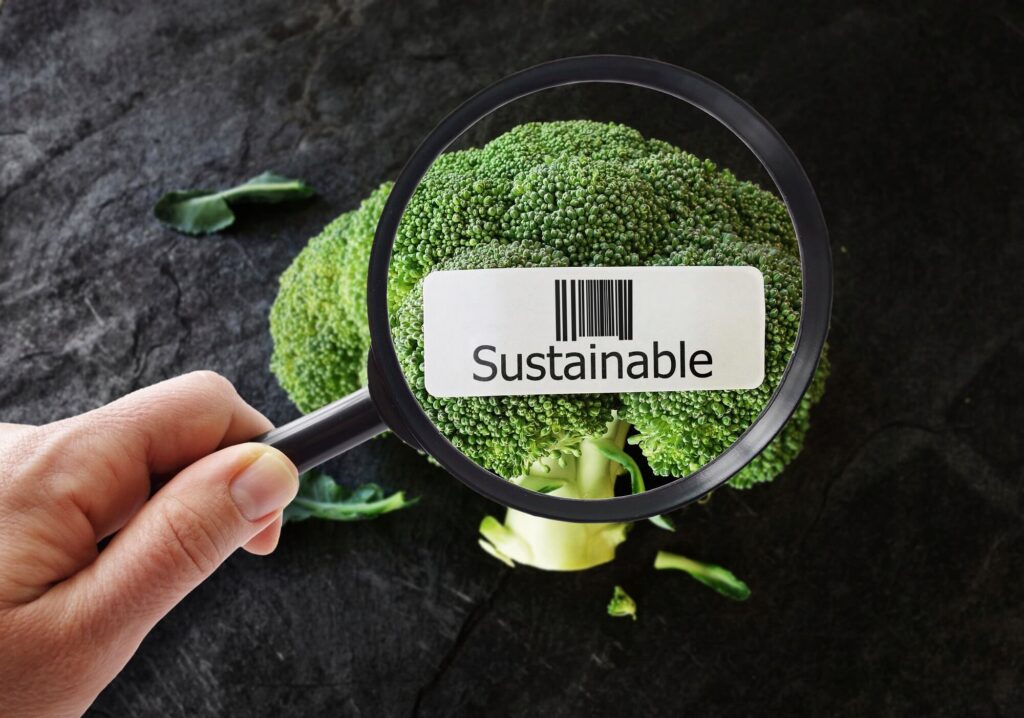
Consumers Role in Driving a Sustainable Food Sector
“We stand at a crossroads in the world’s economy. On the one hand, we are poised to generate better standards of living for more of the world’s people than ever before. At the same time, it is increasingly clear that the consumption-based model of economic growth cannot be applied globally without causing immense environmental and economic disruption”.[i]
The food sector is always in a state of reinvention, and brands must keep a finger on the pulse of change, and the dominant change agent theme today is “Sustainability”. This should come as no surprise, as one-quarter (25%) of the world’s greenhouse gas emissions result from food and agriculture.[ii] Add in the amount of food Canadians waste each year (2.3M tons of food waste emits 6.9M tons into the atmosphere each year)[iii], and the picture becomes clearer as to why 88% of consumers would like brands to help them be more environmentally friendly and ethical. Yet, 43% of consumers feel brands make it harder for them to become more environmentally friendly and ethical in their daily lives.[iv]
Today, consumer’s perceptions of personal health and the health of the environment are intertwined. Citing data from a Health Focus study of 12,000 consumers around the world and, specifically, 1,000 in North America, 74% of consumers in North America say the health of the environment is “extremely important” or “important” to their overall health, outranking diet and exercise.[v]
What is Sustainability?
“Sustainability consists of fulfilling the needs of current generations without compromising the needs of future generations while ensuring a balance between economic growth, environmental care, and social well-being.”[vi]

What is Involved in Sustainability for F & B Companies?
Sustainability is often interpreted as relating solely to the company’s environmental footprint, but the issues involved include: 1. Reducing Waste,
- Lowering energy and water consumption, 3. Cutting pollution and emissions, and
- Minimizing their impact on the environment.
What is the Global Size of the Sustainable Food Market?
The environmentally friendly and sustainable food market is forecasted to top sales of USD 170.5 B by 2028, growing at a compounded annual growth rate (CAGR) of 6.6% during the 7-year period of 2021-2028.[vii]
What is the Growth of Sustainable Products?
The 2021 Sustainable Market Share Index reported:
- Sustainability-marketed products are responsible for a third (33%) of the growth in consumer-packaged goods from 2015 to 2021.
- Products marketed as sustainable now hold a 17% market share, up 3.3% percentage points versus 2015.
- Products marketed as sustainable grew 2.7x faster than products not marketed as sustainable and achieved a 6-year CAGR of 7.3% vs. 2.8% for their conventional counterparts.[viii]
Who is the Sustainable Consumer?
Generally, women are more likely to be committed to a sustainable lifestyle and were statistically more likely to have recently carried out actions such as recycling and using reusable bags. Generation Z and Millennials are more inclined to live a sustainable lifestyle. A Pew Research Study undertaken in 2021 revealed:
- 67% of Generation Z and 71% of Millennials feel climate change should be a top priority to ensure a sustainable planet for future generations.[ix]
The Evolving Consumers Eating Habits!
Consumers eating habits have evolved with a focus on healthy eating and the preservation of the environment. CII Foods as part of their study titled:
“What’s Ahead for Plant-Based Foods in 2023” suggested 30% of consumers are either:
- Flexitarian (22%), 2. Vegetarian (3%), 3. Pescetarian (2%), or Vegan (2%).[x]
According to “Shrink That Footprint comparison, a meat lover has the highest carbon footprint at 3.3 tons of greenhouse gas emissions. A vegan diet has the lowest carbon footprint at just 1.5 tons of CO2e (Carbon Dioxide Equivalent). A vegetarian diet has a carbon footprint of 1.7 tons of greenhouse gas emissions.[xi]
What is the Rise Behind Purchasing Sustainable Products?
A desire to help the environment was found to be the primary reason consumers purchase sustainable products and brands:
- Almost 30% say they want to improve the environment.
- 23% wish to reduce production waste.
- 22% wish to reduce their carbon footprint, and
- 17% are concerned with animal welfare.[xii]
Are Consumers Willing to Pay More for Sustainable Products?
As part of their 2023 study titled: “The Shoppers Have Spoken”, Canadian Grocer magazine revealed:
- 48% – “Not willing to pay more” for sustainable products.
- 41% “Willing to pay a bit more” for sustainable products.
- 10% “Willing to pay somewhat more” for sustainable products.
- 1% “Willing to pay a lot more” for sustainable products.[xiii]
Sustainability is not a passing fad. It is here to stay, and if a brand’s strategy is not aligned with consumers’ wishes, there is an increased risk that it may not be around
the next decade. Presently I have the pleasure to be working with 3 brands whose business strategy is aligned with sustainability:
- Puppy Gang Fresh Foods: puppygangfreshfoods.com
- Women Empowered, Ontario-based dog food company.
- No food wastes. All waste goes to their worm farm.
- Their packaging tray is compostable.
- Bentilia: bentilia.com
- Clean label – one ingredient – Red lentil pasta.
- High in protein and fibre.
- Exceeds environmental expectations – red lentil has one of the lowest carbon footprint foods in the world.
- Saltean Chef Secret: saltean.com
- Himalayan salt extracted from Pakistan.
- Hand-harvested by skilled workers who use these time-honored methods and techniques, thus there’s little to no pollution or waste byproducts from manufacturing.
I leave you with this quotation:
“The greatest threat to our planet is the belief that someone else will save it”.
Robert Swan, Author
References:
[i] The New Frontier in Sustainability, www.bsr.org, July 2010
[ii] Food Production is Responsible for One-Quarter of the World’s Greenhouse Gas Emissions, www.ourworldindata.org, November 2019
[iii] Food Waste in Canada, www.seeds.ca, September 2022
[iv] 88% of Consumers Want You To Help Them Make a Difference, www.forbes.com, November 2018
[v] Sustainability Changing How Consumers Define Healthy, www.foodbusinessnews.net, 2023
[vi] What is Sustainability? Definition, Types and Examples, www.becas-santander.com, June 2022
[vii] Global Environment Friendly and Sustainable Food Market, www.databridgemarketresearch.com
[viii] Sustainable Market Share Index, www.stern.nyu.edu.com, 2021
[ix] Gen Z, Millennials Stand Out For Climate Change Activism, Social Media Engagement with Issue, www.pewresearch.com, 2021
[x] What’s Ahead for Plant-Based Foods in 2023, CII Foods, 2023
[xi] Food’s Carbon FootPrint, www.greeneatz.com/foods-carbon-footprint.html
[xii] Consumers Demand Sustainable Products and Shopping Formats, www.forbes.com, March 2022
[xiii] The Shoppers Have Spoken, www.canadiangrocer.com, February 2023





